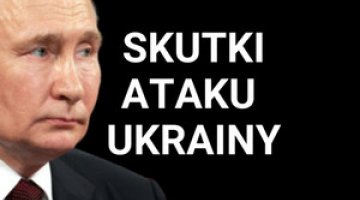Russia’s attack on Ukraine: day 102

The Ukrainian side provides conflicting information on the situation in Sievierodonetsk. According to official data, a counter-attack was launched over the weekend, as a result of which Russian forces were pushed out of some areas and almost half of the city area was brought under control. On the other hand, local media reports (from defenders, among others) indicated that there were no offensive actions by the Ukrainians, that the aggressor continued to advance and that the defenders remained only in the so-called industrial area and one of the adjacent quarters in the western part of Sievierodonetsk (on the morning of 6 June this was confirmed by the Ukrainian General Staff and the local military-civil administration, which indicated that the situation had ‘deteriorated somewhat’). According to the head of the military-civil administration of the Luhansk Oblast, Serhiy Haidai, Ukrainian troops could retake the city, but – unlike neighbouring Lysychansk – it is not of strategic importance. He also reported that the invaders were tasked with seizing Sievierodonetsk and the Lysychansk-Bakhmut route (the so-called road of life) by 10 June.
Russian forces continue to operate to close the Ukrainian grouping in the Luhansk Oblast along the border with the Donetsk Oblast (attacking near the villages of Bilohorivka on the Donets River and Mykolaivka southwest of Lysychansk) and to take control of the Lysychansk–Bakhmut road (Berestove–Bilohorivka in the Donetsk Oblast). Fighting is ongoing in these areas and the defenders’ positions are to be stormed several times a day. The grouping advancing on Sloviansk from the north (from the Izyum side) is being held back in the Bohorodychne–Dolyna
area (in the Donetsk Oblast), Dovhenke (in the Kharkiv Oblast), and from the east (from the Lyman side) – in the Shchurove–Staryi Karavan area, where the aggressor’s units are trying to push the defenders to the Donets River line. The grouping in the Kharkiv Oblast made another attempt to break through the Ukrainian defenses north of the town of Barvinkove (in the Virnopillya–Brazhkivka area), it also stormed Svyatohirsk on the direction of Lyman. The invading forces were to attack unsuccessfully the village of Bila Krynytsia in the Mykolaiv Oblast on the border with the Kherson Oblast, north of the area seized by the Ukrainian army in May. Kyiv reported the liquidation of the commander of the 1st Army Corps (the so-called People’s Militia of the Donetsk People’s Republic), General Roman Kutuzov, but no details were given.
Russian artillery and aviation continue to strike enemy positions across the line of contact and in the immediate hinterland of Ukrainian forces (including Kharkiv, Mykolaiv, Sloviansk and Kramatorsk), as well as in the border areas of the Chernihiv and Sumy oblasts. An artillery duel took place between Mykolaiv and Kherson. On 4 June, the centre of Donetsk was shelled several times, which, according to the Ukrainian side, is a provocation intended to suggest that the defenders were attacking civilian objects. The targets of the Russian missile strikes were the railway and industrial infrastructure in the Darnytskyi and Dniprovskyi Districts of Kyiv (the Ukrainian side has denied reports of the destruction as a result of these strikes of Western-supplied weaponry, including T-72 tanks), the Korotych airfield on the western outskirts of Kharkiv and grain warehouses in Mykolaiv. The details of the strikes on targets in the Odesa Oblast and the Poltava Oblast are unknown. According to President Volodymyr Zelensky, from 24 February to 4 June, the enemy was to use 2503 ballistic missiles and cruise missiles in attacks.
The fighting units have received 155 mm calibre М109А3 self-propelled howitzers donated by Norway, while Spain is to finalise the delivery of Shorad Aspide short-range anti-aircraft systems to Ukraine. The media there are also reporting that the transfer of disused Leopard 2 tanks is being considered – around 40 of these would be usable once refurbished. Madrid is offering to train Ukrainian soldiers in the use of these machines based on its contingent in Latvia. Sweden has approved the transfer of 5,000 84 mm AT4 calibre anti-tank grenade launchers and 12.7 mm AG90 rifles. The British, in turn, are to equip the army of the invaded country with multi-barrel rocket launchers (MLRS – 3 M270 launchers). Switzerland has agreed to Germany and Italy supplying Ukraine with armament spare parts manufactured in Switzerland or under licence, as well as 42 Leopard 2 tanks, which were returned to the German manufacturer after being withdrawn from service in the Swiss army. On the other hand, it did not allow the transfer to Kyiv of 22 Piranha III wheeled armoured personnel carriers by Denmark and 12,400 pieces of 35 mm ammunition (for Gepard anti-aircraft systems) by Germany. Theoretical training of the crews of seven PzH 2000 cannon howitzers was also completed in Germany and practical training began. The co-owners of the Ukrainian trading network ATB Viktor Karachun and Yevhen Yermakov purchased 290 Mitsubishi L200 pickup trucks for the army, and 90 cars (including 25 Mitsubishi L200s) were donated by the United States.
The occupation forces are brutalising their actions against the local population. In the Mariupol region they repress people who refuse to cooperate with the collaborationist authorities. The courts of the so-called Donetsk People’s Republic sentence them to long-term imprisonment (up to 10 years). The prisons created in the occupied territory of the Donetsk Oblast are overcrowded, and Ukrainian prisoners are kept there in inhumane conditions.
According to the collaborationist authorities, the Russians control about 70% of the Zaporizhzhia Oblast, where about one million people reside; the Ukrainians say 60%. The ‘nationalisation’ of seized property is underway in the occupied territories. The collaborationist authorities in Zaporizhzhia Oblast have announced the seizure of the property of oligarchs Ihor Kolomoisky and Rinat Akhmetov under the pretext that they are financing the ‘nationalist authorities in Kyiv’. In the Kherson Oblast, the property of SBU officers who have moved to territories controlled by Ukrainian forces and judges who have refused to cooperate with the occupying forces are being confiscated.
On June 2, on the front line in the Zaporizhzhia Oblast, an exchange of bodies of fallen soldiers was carried out according to the ‘160 by 160’ formula. The operation was coordinated by the Ministry of Reintegration of Temporarily Occupied Territories, the Main Intelligence Directorate of the Ministry of Defence, the SBU and the General Staff of the Armed Forces of Ukraine. The Russian side concealed information about the event in order to avoid negative reactions from the public, from which the scale of its own losses is hidden.
Vladimir Putin declared that Russia is ready to ensure the export of Ukrainian grain through the occupied ports of Berdiansk and Mariupol, as well as guaranteeing the safety of shipping grain from ports controlled by the enemy. He also noted that Ukraine can send grain through Romania, Hungary or Poland. He considered transport through Belarus to be the cheapest and easiest option, which should be accompanied by the easing of economic sanctions imposed by the West on both countries.
On 5 June, President Zelensky visited Ukrainian army positions in Zaporizhzhia, Donetsk (near Bakhmut) and Luhansk oblasts (Lysychansk region). He was informed about the operational and logistical situation, awarded military officers and met with displaced persons from the occupied areas, mainly from Mariupol. Zelensky expressed confidence that all temporarily occupied cities would be liberated. This was the president’s second trip outside Kyiv Oblast since the beginning of the invasion (on 29 May he visited army posts in Kharkiv Oblast).
As a result of rocket fire in the Donetsk Oblast alone, the Russians destroyed at least 43 churches, most of them belonging to the Ukrainian Orthodox Church of the Moscow Patriarchate (UOC MP). On 5 June, the All Saints’ hermitage in the Sviatohirsk Holy Mountains Lavra was burned down as a result of the shelling of Sviatohirsk. The city’s historical museum, two hermitages and the Lavra’s cells were also ruined, and four monks were killed. President Zelensky stressed that the occupiers were fully aware of the objects they were shelling and knew that there were no military targets on Lavra territory, but that 300 civilians, including 60 children, had found shelter there. On 31 May, the Verkhovna Rada appealed to the UN and UNESCO to strip Russia of its membership in the organisation as a terrorist state destroying monuments and social infrastructure.
Commentary
-
The situation in Sievierodonetsk is similar to that observed in Mariupol (on a correspondingly smaller scale), and it is highly likely that – unless encirclement occurs first – Ukrainian troops will be withdrawn. This is supported by the negative experience of Mariupol – the loss of the best soldiers, who are in captivity after the surrender of the Azovstal plant and are unlikely to be released in a prisoner exchange. The prospect of withdrawal is suggested by the change of position expressed by Haidai – according to him, Sievierodonetsk has lost its previous strategic importance in favour of Lysychansk. The information given by the Ukrainian side that enemy forces were ordered to seize the city and the Lysychansk-Bakhmut road by June 10 should be seen as justifying Kyiv’s announcement of at least a short-term success of defence in both locations. It should be assumed that the Ukrainian authorities are counting on successfully repelling enemy attacks for at least a few days longer, and in the longer term have resigned themselves to having to leave the last patch of the Luhansk Oblast. It should be considered doubtful that in the coming days (or even weeks) the country will receive reinforcements enabling it to field forces capable of repelling an enemy offensive in the Sievierodonetsk area.
-
Putin’s declaration, in which he assured of Russia’s readiness to guarantee the possibility of exporting Ukrainian grain, and the indication of the route via Belarus as the most advantageous transport route, is only a political ploy, aimed at starting talks in a multilateral format on resolving the food crisis. The Kremlin is making its further course of action dependent on the fulfilment of two conditions: the West’s withdrawal from some of the economic sanctions imposed on Russia and Belarus, and the Black Sea Fleet’s assumption of control over the convoying of ships leaving Ukrainian-controlled seaports (Odesa, Mykolaiv, Pivdennyi). The Russian side conditions this on the enemy’s demining of its territorial waters, which would mean the cessation of Ukrainian military operations against the aggressor’s forces in the Black Sea.
-
Among the infrastructure destroyed by the invaders are many churches belonging to the Ukrainian Orthodox Church of the Moscow Patriarchate (UOC MP), which dominates the east of Ukraine. Paradoxically, these are mainly temples of the Church, which until recently had been closely linked to Russia and was used by Moscow as a tool for manipulating the situation in Ukraine. However, the brutality of the invasion, affecting mostly the Russian-speaking population in the east of the country and churches of the UOC MP, brought about a dramatic change in public sentiment towards the Russian Orthodox Church and a decision to sever ties with it, taken by the head of the UOC MP, Metropolitan Onufry, at a council on 27 May.





